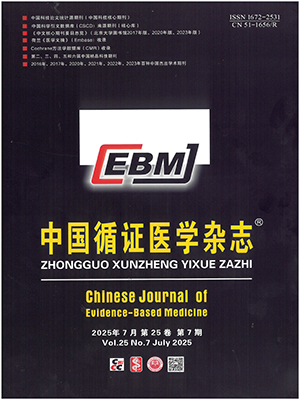| 1. |
Embry M. Observation surunaccouchement termina dansle bain. Ann. Soc Med. Prat Montpellier, 1805, 5: 13-19.
|
| 2. |
Machey MM. Use of water in labor and birth. Clinical Obstetrics and Gynecology, 2001, 44(4): 733-749.
|
| 3. |
Edlich RF, Towler MA, Goitz RJ, et al. Bioengineering principles of hydrotherapy. J Burn Care Rehabil, 1987, 8(6): 580-584..
|
| 4. |
Church LK. Water birth: one birthing center’s observations. J Nurse Midwifery, 1989, 34(4): 165-170.
|
| 5. |
Geissbühler V, Eberhard J. Waterbirths: a comparative study. A prospective study on more than 2,000 waterbirths. Fetal Diagn Ther, 2000, 15(5): 291-300.
|
| 6. |
Garland D, Jones K. Waterbirth: updating the evidence. British Journal of Midwifery, 1997, 5(6): 368-373.
|
| 7. |
Schorn MN, McAllister JL, Blanco JD. Water immersion and the effect on labor. J Nurse Midwifery, 1993, 38(6): 336-342.
|
| 8. |
Alderdice F, Renfrew M, Marchant S, et al. Labour and birth in water in England and Wales: survey report. British Journal of Midwifery, 1995, 3(7): 376-382.
|
| 9. |
Waterbirths BE. MIDIRS Midwifery Digest, 2001, 11(3): S10-13.
|
| 10. |
Rosevear SK, Fox R, Marlow N, et al. Birthing pools and the fetus. Lancet, 1993, 342: 1048-1049.
|
| 11. |
Hawkins S. Water versus conventional birth: infections rates compared. Nursing Times, 1995, 91(15): 38-40.
|
| 12. |
Deans AC, Steer PH. Temperature of pool is important. BMJ, 1995, 311: 390-391.
|
| 13. |
Higgins JPT, Green S (editors). Cochrane Handbook for Systematic Reviews of Interventions Version 5. 0. 1[updated February 2008]. The Cochrane Collaboration, 2008. Available from www. cochrane-handbook. org.
|
| 14. |
Review Manager (RevMan) [Computer program]. Version 5. 0. Copenhagen: The Nordic Cochrane Centre, The Cochrane Collaboration, 2008.
|
| 15. |
蔡红霞, 徐毅, 林燕敏, 等. 水中分娩对产妇及新生儿的影响. 中华护理杂志, 2005, 40(3): 200-201.
|
| 16. |
董淑筠, 金皖玲, 程蔚蔚, 等. 水中分娩462例临床分析. 上海医学, 2005, 28(9): 737-740.
|
| 17. |
邹文霞, 朱宁湖. 水中分娩对产程的影响. 临床和实验医学杂志, 2008, 7(6): 137.
|
| 18. |
Cammu H, Clasen K, Van Wettere L, et al. ’To bathe or not to bathe’ during the first stage of labor. Acta Obstet Gynecol Scand, 1994, 73(6): 468-472.
|
| 19. |
Eckert K, Turnbull D, MacLennan A. Immersion in water in the first stage of labor: a randomized controlled trial. Birth, 2001, 28(2): 84-93.
|
| 20. |
Cluett ER, Pickering RM, Getliffe K, et al. Randomised controlled trial of labouring in water compared with standard of augmentation for management of dystocia in first stage of labour. BMJ, 2004, 328(7442): 767-768.
|
| 21. |
Ohlsson G, Buchhave P, Leandersson U, et al. Warm tub bathing during labor: maternal and neonatal effects. Acta Obstet Gynecol Scand, 2001, 80(4): 311-314.
|
| 22. |
Rush J, Burlock S, Lambert K, et al. The effects of whirlpools baths in labor: a randomized, controlled trial. Birth, 1996, 23(3): 136-143.
|
| 23. |
Taha M. The effects of water on labour: a randomised controlled trial. Rand Afrikaans University South Africa, 2000.
|
| 24. |
Schorn MN, McAllister JL, Blanco JD. Water immersion and the effect on labor. Journal of Nurse-Midwifery, 1993, 38(6): 336-342.
|
| 25. |
Zanetti-Daellenbach RA, Tschudin S. Maternal and neonatal infections and obstetrical outcome in water birth. Eur J Obstet Gynecol Reprod Biol, 2007, 134(1): 37-43.
|
| 26. |
施华芳, 赵志丹. 水中分娩的实施和应用前景. 中国妇幼保健, 2007(22): 284-286.
|
| 27. |
De Punzio C, Neri E, Metelli P, et al. The relationship between maternal relaxation and plasma beta-endorphin levels during parturition. J Psychosom Obstet Gynaecol, 1994, 15(4): 205-210.
|
| 28. |
Schorn MN, McAllister JL, Blanco JD. Water immersion and the effect on labor. J Nurse Midwifery, 1993, 38(6): 336-342.
|
| 29. |
Geissbuehler V, Stein S, Eberhard J. Waterbirths compared with landbirths: an observational study of nine years. J Perinat Med, 2004, 32(4): 308-314.
|
| 30. |
Bodner K, Bodner-Adler B, Wierrani F, et al. Effects of water birth on maternal and neonatal outcomes. Wien Klin Wochenschr, 2002, 114(10-11): 391-395.
|




